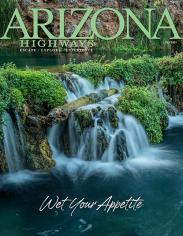Salt Mine Road
Prescott National Forest, Camp Verde
Everything you need to know about Camp Verde can be learned by driving Salt Mine Road. It highlights the town’s rural character and provides multiple history lessons and delicious scenery. Most significantly, it accentuates the life-altering dynamics that exist where desert and riparian habitats collide.
